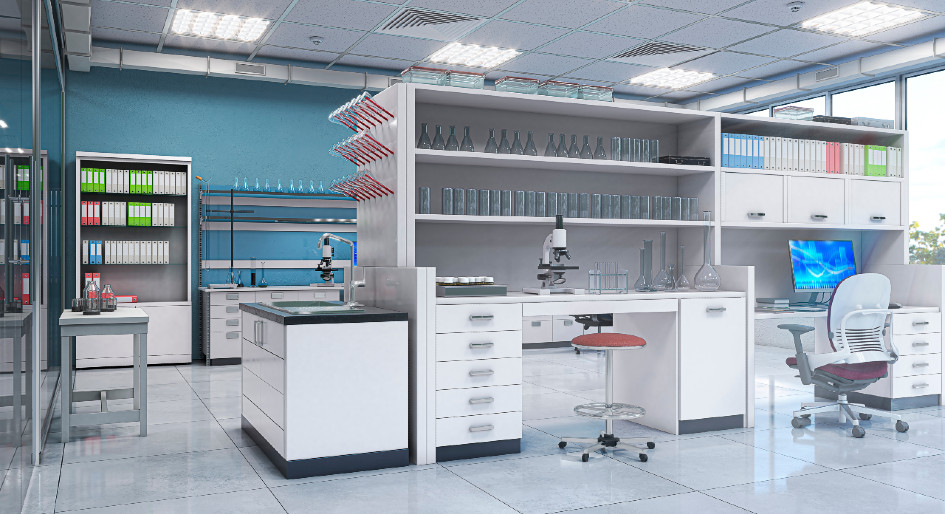Market analysts see a vibrant niche of investment potential in current lab space scarcity across the Greater Toronto and Hamilton Area (GTHA). A new report from CBRE pegs the vacancy rate at 0.2 per cent within approximately 12.3 million square feet of inventory. Meanwhile, there’s presumed demand for about 3.6 million square feet of either research and development (R&D) or good manufacturing practices (GMP) space.
Life sciences enterprises have few options to secure space in multi-tenant facilities outside of two highly in-demand R&D campuses in Toronto and Hamilton — MaRS Discovery District and McMaster Innovation Park — and have often invested their own capital to get accommodations suited to their needs. This has translated into a fragmented supply of predominantly smaller owner-occupied buildings.
It’s estimated that about 70 per cent of the GTHA’s existing R&D and GMP lab space is found in venues no larger than 100,000 square feet. Pharmaceutical and bio-manufacturer firms typically operate most of the larger facilities.
“The concentration of lab space in smaller facilities greatly limits the ability for occupiers to expand and grow at scale. The shortage of true multi-tenant lab properties has limited options of occupiers over the years, forcing them to buy or build their own facilities,” observe CBRE’s Daniel Lacey and Evan Lee, the authors of the report. “Occupiers lacking the upfront capital and/or ability to wait for years before occupying have often been compelled to look to U.S. markets for available space.”
In characterizing the demand, Lacey and Lee sketch out the differing profiles of R&D and GMP operatives. Research and development firms occupy about 8.5 million square feet of existing lab space, including 3 million square feet in the MaRS and McMaster campuses, the small 280,000-square-foot quotient of multi-tenant facilities elsewhere and 5.3 million square feet in single-user buildings. Manufacturers occupy fewer, but larger buildings — nearly 4 million square feet in single-use facilities, of which 54 per cent are larger than 50,000 square feet and about 27 per cent are larger than 100,000 square feet.
The same patterns play out in prospective space demand. Lacey and Lee project a need for 1.9 million square feet of R&D lab space, with the majority of proponents seeking between 10,000 to 20,000 square feet. “These smaller requirements are best accommodated by multi-tenant facilities,” they contend. Meanwhile, the estimated demand for 1.7 million square feet of GMP space, would typically be in portions of 100,000 square feet or larger.
Demand for R&D space represents a range of sectors including from companies specializing in advanced materials, medical devices, biotechnology, agri-tech, clean tech, genomics, infectious diseases and energy. Contract development and manufacturing organizations (CDMO) and vaccine manufacturers are leading the push for GMP space. Preferred timelines for the delivery of new lab space ranges from within the next 18 months for R&D firms focused on deploying venture capital to up to three years for GMP users with complicated facility requirements.
Both types of users are placing a priority on “wet lab” space that accommodates the safe and environmentally appropriate handling of chemicals and hazardous materials. Many are also interested in the synergies of the GTHA’s existing lab space clusters, which — along with MaRS and McMaster — include the Pill Hill pharmaceutical node, located near the Mississauga campus of University of Toronto, and the Sheridan Research Park in south Mississauga. As well, convenient highway access is on many space seekers’ wish list.
It all amounts to what Lacey and Lee present as a lucrative void for investors and developers to fill, particularly through the delivery of multi-tenant facilities. Taking the MaRS and McMaster campuses out of the mix, other multi-tenant options make up just 2.3 per cent of the current lab space inventory.
“The laboratory real estate market in the GTHA is a nascent one, but ballooning demand domestically and from abroad is attracting growing investor interest,” they maintain. “Combined with the success and growth of the lab sector seen in the U.S., investor demand has also grown as they come to better understand the nuances and associated costs with building and leasing highly sophisticated lab space.”







